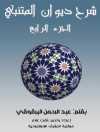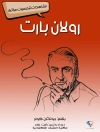Argues that the photographic negative gives a new way of understanding Victorian debates surrounding origins and copies as well as reality and representation.
Victorian Negatives examines the intersection between Victorian photography and literary culture, and argues that the development of the photographic negative played an instrumental role in their confluence. The negative is a technology that facilitates photographic reproduction by way of image inversion, and Susan E. Cook argues that this particular photographic technology influenced the British realist novel and literary celebrity culture, as authors grappled with the technology of inversion and reproduction in their lives and works. The book analyzes literary works by Charles Dickens, Arthur Conan Doyle, E. W. Hornung, Cyril Bennett, Robert Louis Stevenson, Oscar Wilde, Thomas Hardy, and Bram Stoker, and puts readings of those works into conversations with distinct photographic forms, including the daguerreotype, solarization, forensic photography, common cabinet cards, double exposures, and postmortem portraiture. In addition to literary texts, the book analyzes photographic discourses from letters and public writings of photographers and the nineteenth-century press, as well as discussions and debates surrounding Victorian celebrity authorship. The book’s focus on the negative both illuminates an oft-marginalized part of the history of photography and demonstrates the way in which this history is central to Victorian literary culture.
قائمة المحتويات
List of Illustrations
Acknowledgments
Introduction
1. The Daguerreotype: Dickens’s Counterfeit Presentment
2. The Solarized Print: Little Dorrit’s Sun and Shadow
3. The Forensic Photograph and the Cabinet Card: Failing to Observe with Sherlock Holmes
4. The Double Exposure: Double Negatives at the Fin de Siecle
5. The Postmortem Photograph: Photographing (in) Wessex
Conclusion Photographic Absence and the Vampire’s Modern Celebrity
Notes
Works Cited
Index
عن المؤلف
Susan E. Cook is Associate Professor of English at Southern New Hampshire University.












